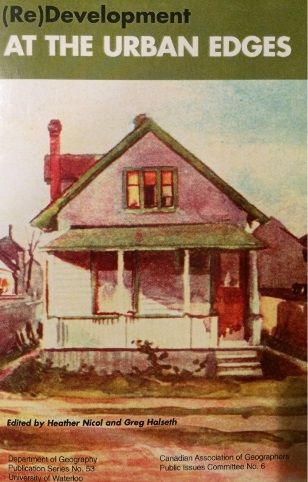Edited by Heather Nicol and Greg Halseth
Published by the University of Waterloo in 2000.

Description
Recent debates among planners, academics, civic politicians, and urban community organizations have highlighted the fact that urban landscapes are changing rapidly and in ways which break from past patterns. It is this renewed interest in the differences between old and new, as well as in enduring points of community, which raises questions with respect to both past and current urban processes and which motivates the collection of essays contained in the book. In (Re)development at the Urban Edge, question are posed concerning urban development and redevelopment, but within a very specific and unique geographical logic – urban edge landscapes. The term urban edges refer to both the physical and metaphorical edges. In a historical context, it was the suburban and rural-urban fringe areas which marked the physical edges of the city. New commercial, industrial, and residential development in these “greenfield” sites played an important role in shaping the urban system. Today, while these physical edges remain important development sites, there are other “edge” landscapes. These include the post World War II suburban landscapes, once at the city’s physical edge but now enveloped by the expanding metropolis, as well as many marginalized older central city industrial zones and waterfronts, all of which now mark more metaphorical edges and represent new frontiers for investment and redevelopment.
For more information, or to order, please visit the UNBC Bookstore.